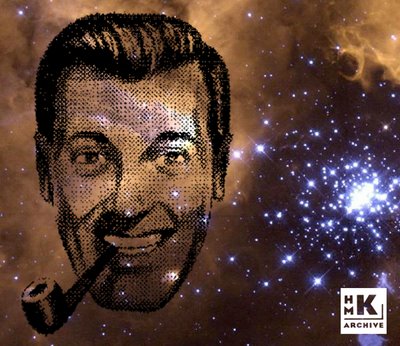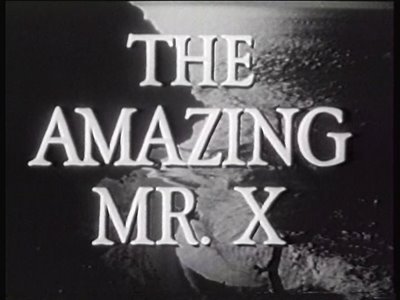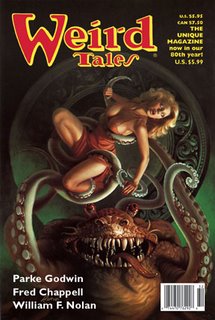
The master bed at the Flag Creek Inn, Fredericksburg, Texas.
Boutiques such as the W made hotels sexy. Now the concept's getting stale. Five next-generation innkeepers take the experience way beyond a mint on your pillow.
Adam Frank
Trevor Pearlman
Reagan Silber
Principals, Edge Group
Las Vegas, Nevada
Frank and company have a challenge: translating the W, the boutique-hotel world's gold standard, into a 3,000-unit hotel/residence and a 75,000-square-foot casino, slated to open on this spot in 2008.
"We're new to Vegas, where there's always a little luck involved. We knew we wanted to work with Starwood Hotels and Resorts, but it had been searching for a Vegas partner for six years. Only after we were able to buy our current plot of land at the entryway of what's known as the Harmon Corridor, the next frontier in Vegas, did we have the leverage to go back to Starwood and seal the deal.
The W won't open for a couple of years, so we have to try to predict where the Vegas hotel market is going and at the same time try to lead it there. Vegas has become the Hamptons of L.A. People now want to own a piece of Vegas, so we're offering a W condo. We also know that Vegas is becoming a popular business destination, so we've stressed the importance of spacious meeting areas and relaxing lounges.
Personal attention is the secret ingredient. Right now, we're working on a 'hotel within a hotel' concept at the W, where we'll be able to treat people as individuals even with our size. We have to think of ourselves not as businessmen but as producers. We're casting people from the hotel, casino, entertainment, and technology industries to keep our vision different, creative, and progressive. We've recruited Kevin Stuessi, who brought big-time chefs such as Todd English to the Bellagio and the Wynn. We also brought in Amanda Scheer Demme from Los Angeles, who's best known as the music supervisor for such films as Erin Brockovich and Mean Girls, to inspire our social scene. In terms of shopping, we're steering clear of the usual strip mall (no pun intended) and instead are going to offer up-and-coming designers the chance to open boutiques. If Steve Wynn's Wynn Las Vegas is Broadway, we want the W to be the Meatpacking District."
Vikram Chatwal
Owner, Dream hotel
New York, New York
Chatwal, 33, opened Dream with Preferred Hotels in 2004. Its hip, imaginative atmosphere has made the hotel a magnet for a mixed business, tourist, and artistic crowd.
"Dreams take you beyond what you think you can do in life. This idea is the basis of my Dream hotel. Early in my investment-banking career, I realized I was on a path that others had set out for me. This hotel opened a new business world to me--a world where my work and my personal interests combined. My Indian heritage plays a part because my culture is known for its hospitality, so in training the staff I took this reflection of kindness and care into account. Another passion I have is acting, which relates to my managerial style because when you're put under pressure, you have to perform.
Aesthetically, Dream speaks to my cultural and artistic background because it is very spiritual and surreal. The ethereal interior and neoclassical architecture are based on some of my own dreams, like the fish-tank column or the statues of Catherine the Great and Poseidon. People walk in and wonder about the thrift-store objects sitting on our coffee tables and why the lower level of my lobby seems like nighttime. There is no one answer. The point is, it makes you think. People are asking questions; they're interested.
As the Dream expands, the idea should constantly evolve as dreams always do. In Bangkok's Times Square, Dream will have a modern Asian surrealist feel mixed with the exciting temperament of that specific spot in the city. In London, Dream will be on the outskirts of the city, so I will give it a calmer temperament--more of a destination rather than an overnight spot."
Henriette Kibsgaard
Sales and marketing manager
Hotel Fox
Copenhagen, Denmark
"Our goal has been to create a hotel for the hotel guests of tomorrow. We asked a different artist to design and create each room in the hotel. Out of 3,000 applicants, 21 artist groups were chosen from 11 countries and 3 continents. At first we worried about targeting 18- to 25-year-olds. But we realized that we could attract people who wanted to experience something new and not just stay at a hotel--people young in mind and open in heart. Their accommodations could be a part of their Copenhagen experience.
To that end, when guests get here, we tell them about the artists and the creative inspiration behind each room, and give them a virtual tour on the computer. Then they pick and choose where they want to stay. It's the same with the amenities. When guests check in, we present them with a minibar bag that they customize. We have predefined lovers' bags, hangover bags, and movie bags, but we let them determine what's inside. We all prefer different things to eat, drink, or do; we all want to be treated as individuals. And what I want today may not be what I want tomorrow. Hotel Fox is the same way. Here, you have something to get inspired by.
This draws a diverse crowd: traveling students, chic couples from Milan or Barcelona, people with blue hair--and interestingly, we get a lot of businesspeople here. If they wake up in a corporate hotel every morning, they don't know if they're in Sydney, Berlin, or London. But when they wake up at Hotel Fox, they know exactly where they are."
Liz Lambert
Owner, Hotel San José
Austin, Texas
With her paradoxical loves--minimalism and color, serenity and excitement--Lambert, 42, has made the San José, below, an unassuming Texas-meets-Zen oasis.
"When I bought the San José, the neighborhood was full of $30-a-night joints for junkies and hookers. People thought I was crazy. Fact is, I had no idea what I was doing, but in the end that was probably a good thing. We made it up as we went. I never wanted to force the hotel into something that it wasn't, so I let it organically grow into itself. For example, when we opened, we didn't have art for the rooms. I pulled poetry from used paperbacks and tacked it up in the bathrooms. I didn't realize that it would turn into a signature until people would take what I had put up and leave something else.
My lack of experience also helped us think of a new way to do service. People love our staff because we don't pick cookie-cutter, polite peons. We pick people with other passions, from band members to former Peace Corps workers. You should feel like you're among friends.
This helps us attract a lot of great visitors, but I especially love how many people we get from Austin. It's because we're a part of the community. We have an elite cycling team, we hold free concerts in our parking lot, and we work with the area's disadvantaged youths. We're also dog friendly, which usually works out until some Fido starts swimming in the pool. But hey, you can't be all things to all people."
Stephen Westman
Vibe manager, Hard Rock Hotel
Chicago, Illinois
Westman, 27, is in charge of creating Hard Rock Chicago's atmosphere using music, infusing an upscale hotel with the irreverence of rock 'n' roll.
"Yes, 'vibe manager' is my actual job title. Here's the story. Music is our key differentiation. It's normal for a record store or radio promotional company to be on top of the music industry, but for a hotel, it's hot. So we have to do things that are cool and unique to offer something the other hotels can't. When I started, there would be a melodic folk rocker playing in the lounge, but before his performance, the music spinning in our public spaces was new-metal acts. The transition to this folksy rock didn't make sense, making what I considered a pretty lame vibe. So I identified our performances and preprogrammed the music in our public spaces to avoid this kind of awkward transition of music styles.
I have to be on top of what artists are hitting next, what genres of music are about to be popular. You see a lot of hotels selling their lobby tunes on a CD. Well, if that's the average, then I'm going to get one of those hard-drive sticks, have them preprogrammed, and put those in the guest rooms. I also look for promotional opportunities we can do to create unique experiences. Like this week, I'm working on a CD-release party with Warner Bros. for the new Madonna album, Confessions on a Dance Floor. This is a vibe experience because it gives the media a cool perception of the Hard Rock, and if you think about it, an album-release event has nothing to do with a hotel.
Music is a common thread through life. It's my job to make sense of this place day to day based on who's staying here. We want people to walk through the door and say, 'This is truly cool, and I am definitely coming back.' "
Thanks to Fast Company: Issue 102 | January 2006 | Page 21 | By: Stirling Kelso










 And if you're into old movie stills, you'll enjoy Steven Hill's Movie Title Screens.
And if you're into old movie stills, you'll enjoy Steven Hill's Movie Title Screens. Helvetica is a feature-length independent film about typography, graphic design and global visual culture. It looks at the proliferation of one typeface (which will celebrate its 50th birthday in 2007) as part of a larger conversation about the way type affects our lives. The film is an exploration of urban spaces in major cities and the type that inhabits them, and a fluid discussion with renowned designers about the choices and aesthetics behind their use of type.
Helvetica is a feature-length independent film about typography, graphic design and global visual culture. It looks at the proliferation of one typeface (which will celebrate its 50th birthday in 2007) as part of a larger conversation about the way type affects our lives. The film is an exploration of urban spaces in major cities and the type that inhabits them, and a fluid discussion with renowned designers about the choices and aesthetics behind their use of type. 




 Click To Enlarge
Click To Enlarge
